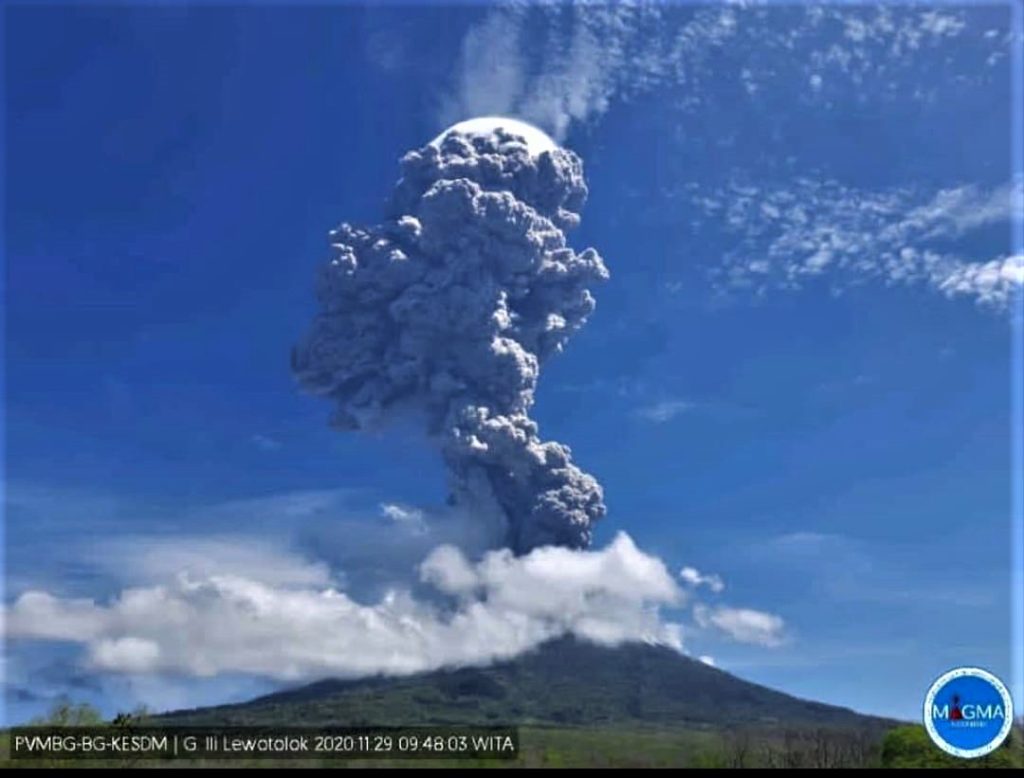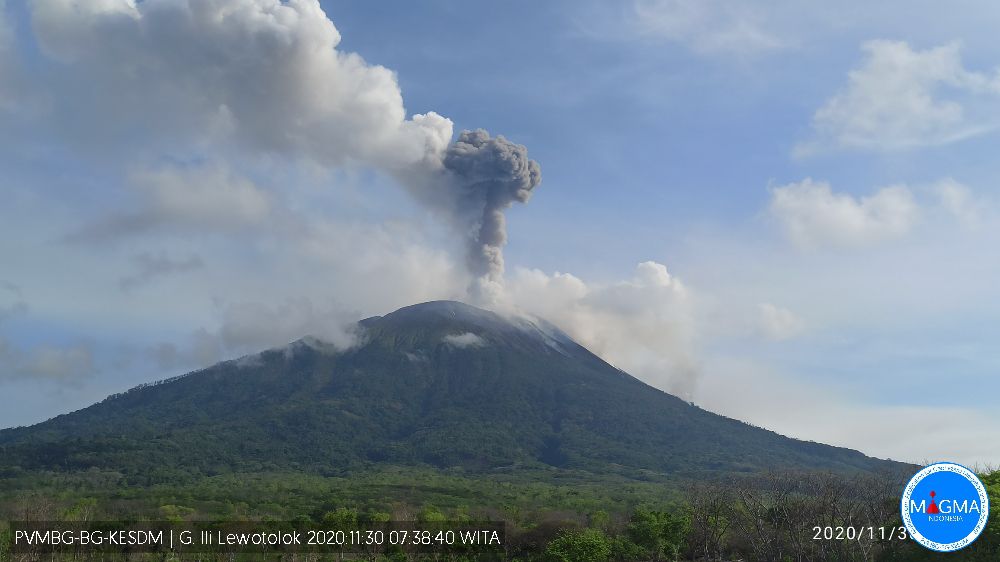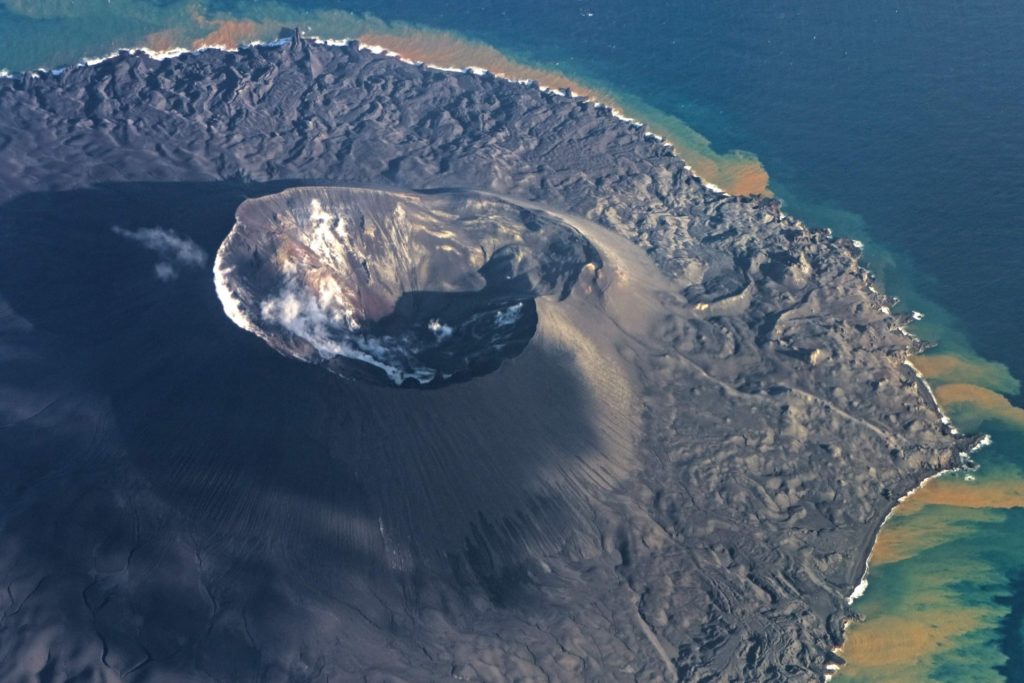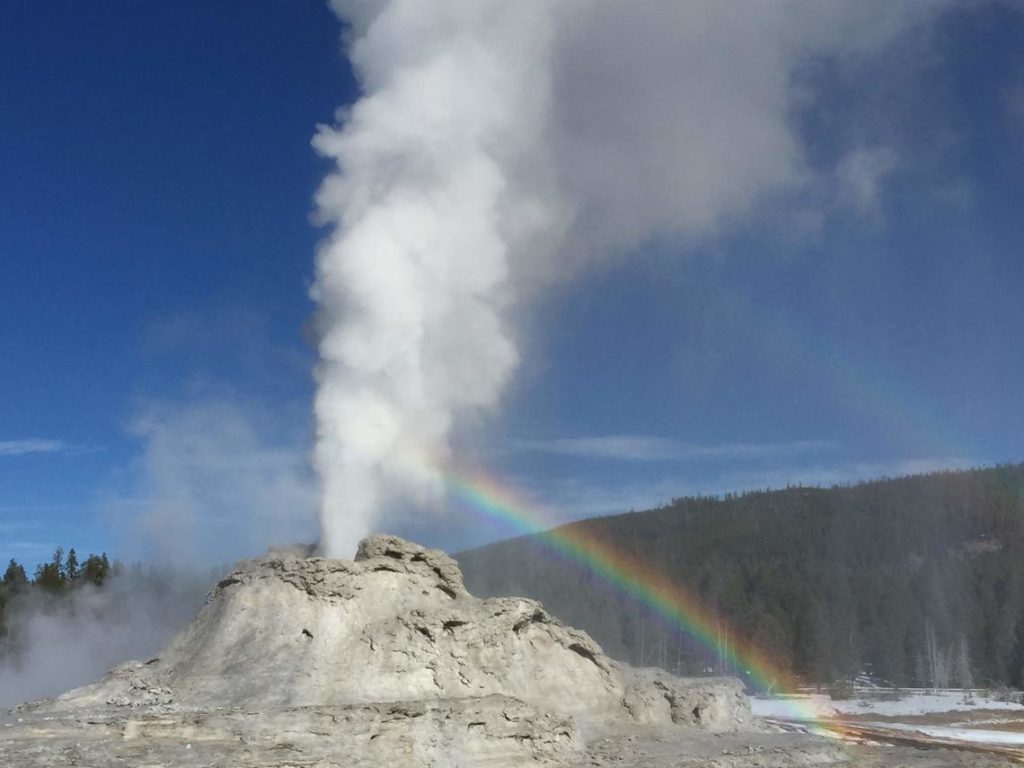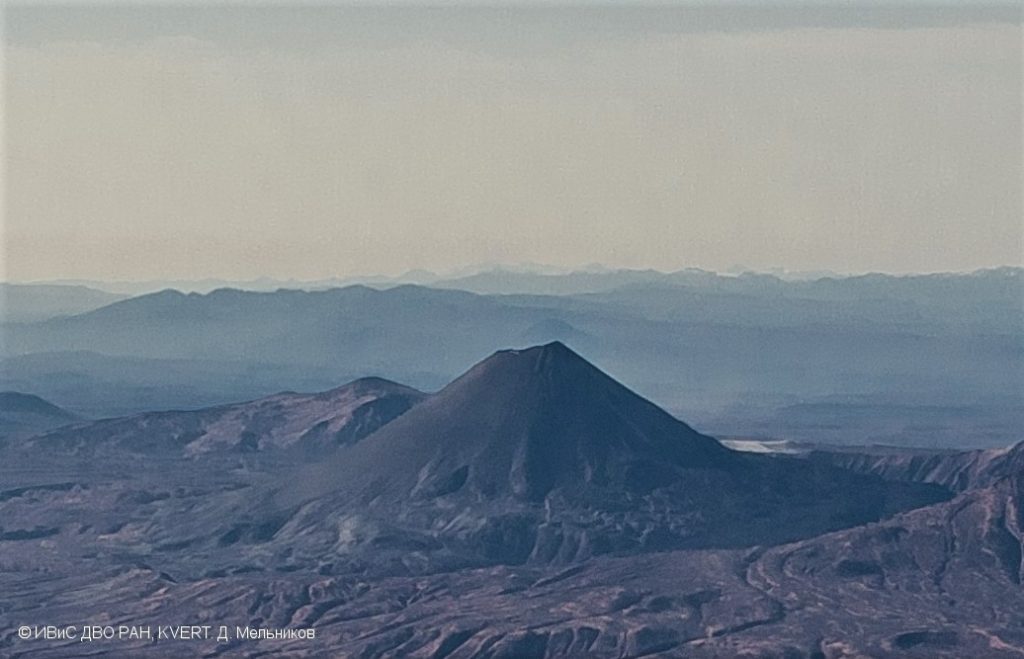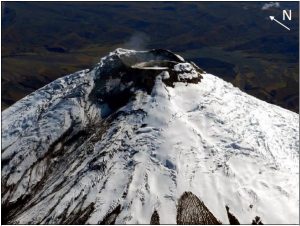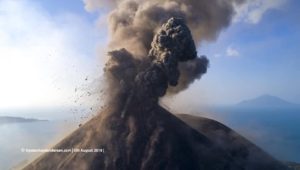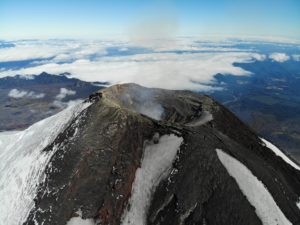Décember 03 , 2020.
Indonesia , Ili Lewotolok :
The activity level of the Ili Lewotolok volcano has gone from level II (WASPADA) to level III (SIAGA). The increase in activity level status was driven by a significant increase in seismicity, particularly local tectonic (TL), deep volcanic (VA) and shallow volcanic (VB) earthquakes since mid-September 2017.
The Ili Lewotolok volcano (1018 m above sea level) erupted on November 27, 2020 at 05:57 a.m. with an ash column height observed in gray / black at 500 m above the summit (± 1923 m at above sea level) with a thick intensity, oriented towards a West direction. This eruption was recorded on a seismogram with a maximum amplitude of 34 mm and the duration of the eruption was not clearly observed because it was followed by continuous tremors. And on November 29, 2020 at 1:00 p.m., the activity level of the Ili Lewotolok volcano went from level II (WASPADA) to level III (SIAGA).
The results of the last day of monitoring showed that the volcano was clearly visible until it was covered in fog. We observed smoke emitted from the crater, gray / black in color, with moderate intensity and from a height of 500 to 700 meters above the peak. The eruptions were accompanied by ash and roaring. An eruption was observed with an ash column 500-700 meters above the peak and a gray smoke color. The rash was accompanied by a weak to moderate rumbling. At night, there was an incandescence at the top. The weather is sunny, cloudy, cloudy / rainy. Weak winds to the east and west. Air temperature 27-28 ° C
According to the seismographs of December 1, 2020, it was recorded:
8 eruption / explosion earthquakes
50 non-Harmonic tremors
4 hybrid / multi-phase earthquakes
2 deep volcanic earthquakes
1 distant volcanic earthquakes
Continuous tremor of amplitude from 2 to 16 mm (dominant value of 6 mm)
Recommendation:
Communities around G. Ili Lewotolok and visitors / climbers / tourists are recommended not to conduct activities within a radius of 4 km around the summit crater.
Considering the potential danger of volcanic ash which can cause acute respiratory problems (ISPA) and other health problems, people around G. Ili Lewotolok should prepare nasal and mouth masks and other equipment to protect their eyes. and their skin.
VONA:
The latest VONA message received a color code ORANGE, published on November 29, 2020 at 10:00:00 WITA. Volcanic ash had been observed at an altitude of 5,423 m above sea level or about 4,000 m above the summit.
Ashfall was reported in several surrounding villages and video posted on social media showed tephra falling on roofs in residential areas. According to BNPB, Badan Penanggulangan Bencana Daerah (BPBD) evacuated almost 4,500 residents from 26 villages to seven evacuation centers. At 1300, the Alert Level was raised to 3 (on a scale of 1-4) and the public was warned to stay 4 km away from the summer crater.
Ash plumes continued to rise on at least six more occasions, and around 1900 Strombolian activity was visible. A pungent sulfur odor was noted at the Lewotolo observation post. Satellite data showed that a sulfur dioxide plume had drifted over the N half of Australia by 30 November. Ash plumes continued to be emitted during 30 November-1 December, with dense white-and-gray ash plumes rising 700-2,000 m above the summit. Lava flows near the summit were visible and incandescent material traveled down the flanks.
Source : PVMBG , GVP.
Photos : Magma Indonésia
Japan , Nishinoshima :
The Japan Coast Guard reported that during an overflight of Nishinoshima on 24 November , scientists observed white fumarolic plumes rising from multiple locations on the inner crater wall and the rim. The inner crater wall continued to be hot. The ocean water was brown around the W, S, and E parts of the island.
The small island of Nishinoshima was enlarged when several new islands coalesced during an eruption in 1973-74. Another eruption that began offshore in 2013 completely covered the previous exposed surface and enlarged the island again. Water discoloration has been observed on several occasions since. The island is the summit of a massive submarine volcano that has prominent satellitic peaks to the S, W, and NE. The summit of the southern cone rises to within 214 m of the sea surface 9 km SSE.
Source : GVP
Photos : Gardes Côtes Japonais : https://www1.kaiho.mlit.go.jp/GIJU…/kaiikiDB/kaiyo18-2.htm
United States , Yellowstone :
44°25’48 » N 110°40’12 » W,
Summit Elevation 9203 ft (2805 m)
Current Volcano Alert Level: NORMAL
Current Aviation Color Code: GREEN
Recent work and news
Field work in Yellowstone has largely ended for the season, and all monitoring networks are fully operational.
Steamboat Geyser experienced four water eruptions during the month: November 3, 11, 20, and 29. This brings the total number of eruptions for the year to 46.
Seismicity
During November 2020, the University of Utah Seismograph Stations, responsible for the operation and analysis of the Yellowstone Seismic Network, located 100 earthquakes in the Yellowstone National Park region. The largest event was a minor earthquake of magnitude 3.1 located 9 miles north-northeast of West Yellowstone, Montana, on November 25 at 5:58 AM MST.
View of Castle Geyser, near Old Faithful, in eruption, taken from the boardwalk, November 5, 2019.
November seismicity included one swarm of 12 earthquakes, occurring on November 25. The swarm was located 9 miles north-northeast of West Yellowstone, Montana, and included the largest event of the month.
Yellowstone earthquake activity remains at background levels.
Ground deformation
Deformation rates and styles at Yellowstone, as recorded by continuous GPS stations, have been steady throughout 2020. Subsidence of Yellowstone Caldera, which has been ongoing since 2015, continued at an average rate of 2-3 cm (about 1 in) per year. In the area of Norris Geyser Basin, little deformation has been detected by a nearby GPS station since the start of the year.
Source : YVO.
Photo : Shaul Hurwitz USGS
Kamchatka , Karymsky :
VOLCANO OBSERVATORY NOTICE FOR AVIATION (VONA).
Issued: November 02 , 2020
Volcano: Karymsky (CAVW #300130)
Current aviation colour code: YELLOW
Previous aviation colour code: orange
Source: KVERT
Notice Number: 2020-226
Volcano Location: N 54 deg 2 min E 159 deg 26 min
Area: Kamchatka, Russia
Summit Elevation: 4874.08 ft (1486 m)
Volcanic Activity Summary:
The activity of Karymsky volcano significantly decreased. Aviation colour codeis lowered to YELLOW . Last strong ash explosions of the volcano up to 8 km a.s.l. were observed on November 08, 2020. The thermal anomaly over the volcano was noted last time on November 19. A moderate gas-steam activity of the volcano continues. KVERT continues to monitor of Karymsky volcano.
A moderate gas-steam activity of the volcano continues. The danger of ash explosions up to 16,400-23,000 ft (5-7 km) a.s.l. is remains. Ongoing activity could affect low-flying aircraft.
Volcanic cloud height: NO ASH CLOUD PRODUSED
Other volcanic cloud information: NO ASH CLOUD PRODUSED
Source : Kvert
Photo : D. Melnikov. IVS FEB RAS, KVERT


